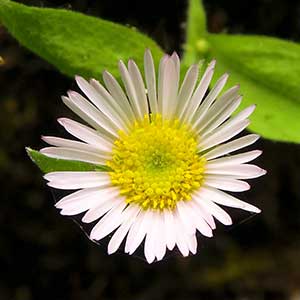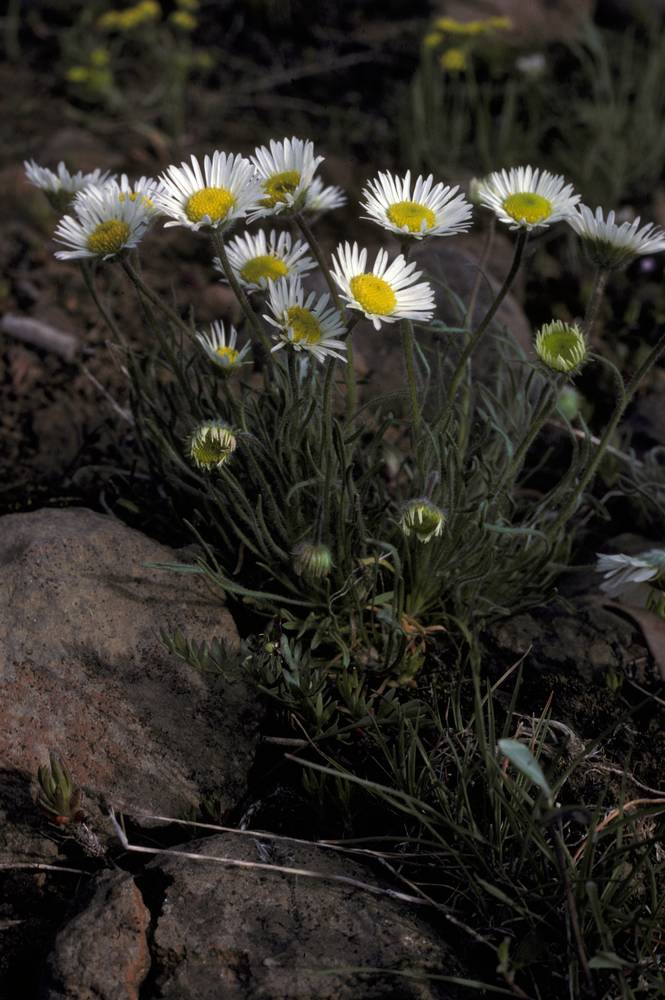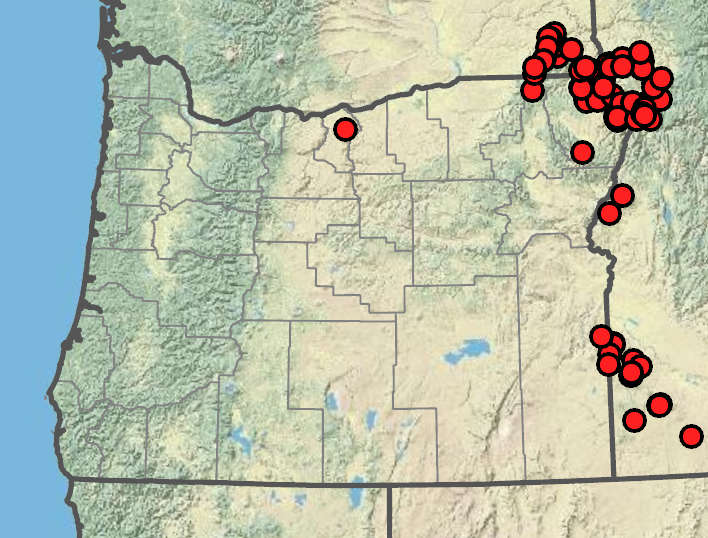Erigeron oreganus
Erigeron disparipilus
(synonym of Erigeron davisii)
Gorge daisy, gorge fleabane, Oregon fleabane
Snake River daisy, white cushion fleabane
decumbent to erect; hirsute with unequal hairs, sparsely glandular.
erect, sparsely to moderately hirsute to strigose, eglandular.
persistent, obovate, 15–90 × 5–20 mm;
margins coarsely serrate to shallowly lobulate;
surfaces sparsely to moderately hirsute to strigose.
persistent, narrowly spatulate to narrowly oblanceolate-elliptic, 30–80 × 3–5 mm;
margins entire, with 1 prominent vein;
surfaces moderately to densely strigose, eglandular.
obovate to elliptic; little or not reduced distally;
surfaces sparsely to moderately hirsute.
few, linear, 10–40 × 1–3 mm, reduced distally.
4–7 × 9–15 mm.
3.5–8 × 12–18 mm.
30–60, pink to purple;
rays 4–5 × 0.5–1 mm.
25–50, white or cream, occasionally fading to pink;
rays 4–8 × 1–3 mm.
corollas 3–5 mm.
corollas 3–4 mm.
in 2–3 series, pale green with dark green medial stripe;
surfaces remotely hirsute, strongly stipitate-glandular.
in 2–3 series, usually with dark green medial area with or without orange stripe;
surfaces moderately to densely hirsute or strigose, moderately to densely glandular.
2–3 mm, moderately strigose;
inner pappi of several unbarbed to weakly barbellate twisted bristles.
1.5–3 mm, sparsely to moderately strigose;
inner pappi of numerous barbellate bristles.
1–4, radiate.
usually 1, radiate.
Erigeron oreganus
Erigeron disparipilus
Shady cliffs, rocky slopes, crevices. Flowering May–Aug. 100–400 m. Casc. WA. Native.
This uncommon species is found only in the Columbia River Gorge.
Open rocky areas, ridges. Flowering Jun–Jul. 1100–1800 m. BW. ID, WA. Native.
Some floras recognize plants with stem hairs in the same orientation (versus mixed) as E. davisii. The ranges and habitat of these taxa are, however, sympatric. Until further evidence shows otherwise, there is no compelling reason to recognize E. davisii as distinct from E. disparipilus.
James Riser, Stephen Meyers
James Riser, Stephen Meyers
- Local floras:
OR,
WA
- Local Web sites:
Flora NW,
PNW Herbaria
WildflowerSearch
iNaturalist (observations)
- LBJ Wildflower Center
- SEINet
- Plants of the World Online
- Encyclopedia of Life
- Wikipedia
- Google Image Search





